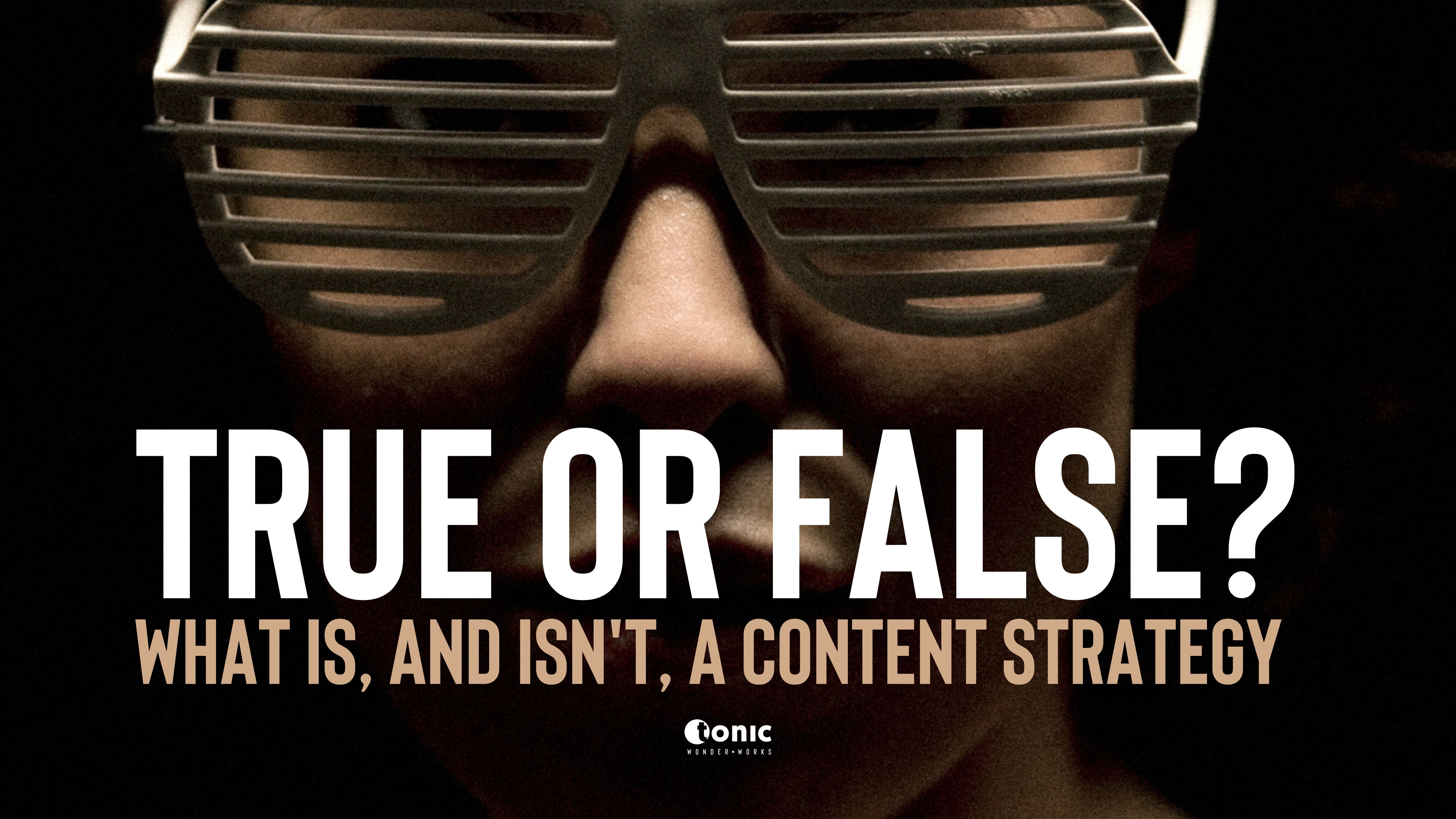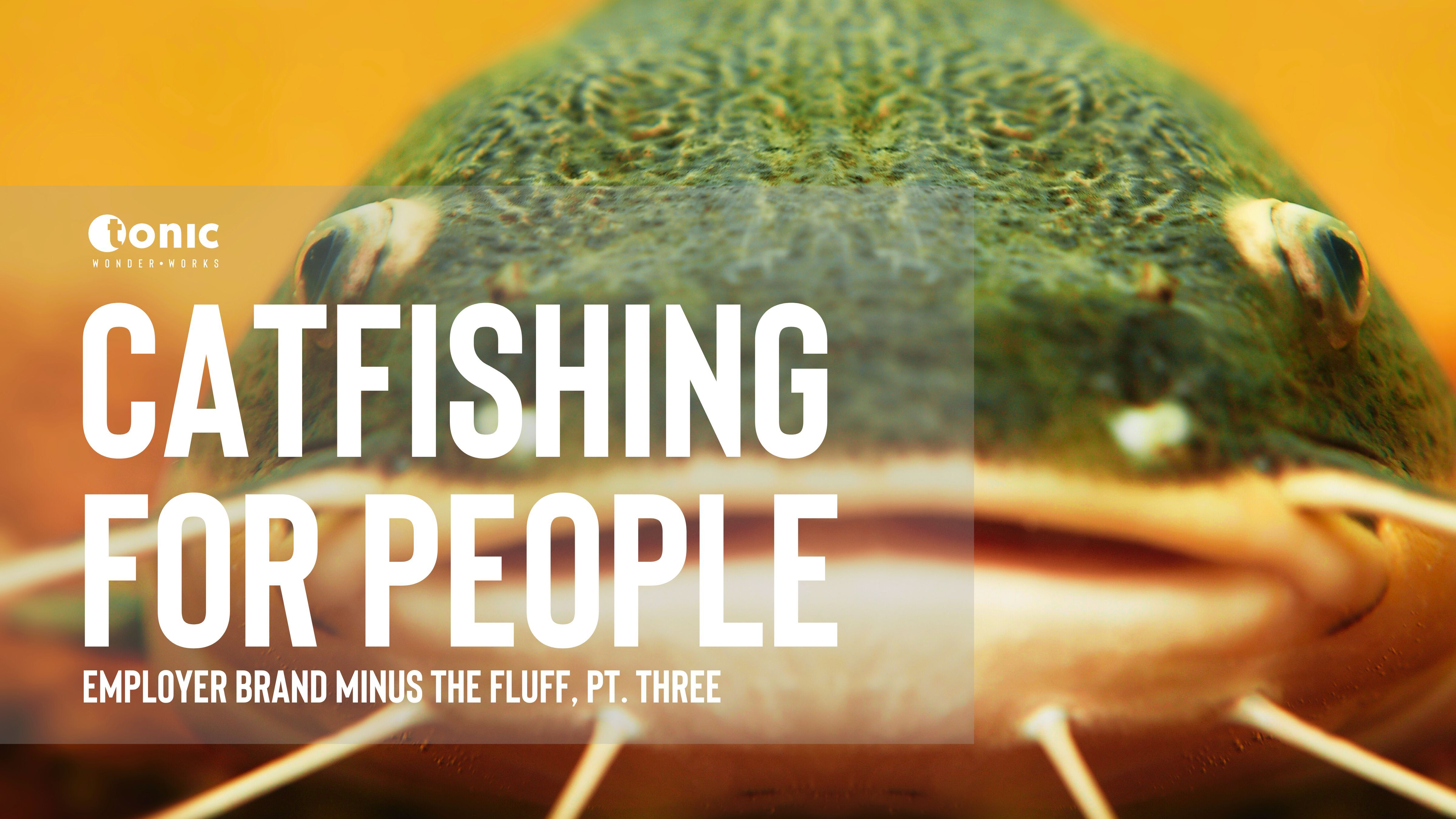It’s time to demystify content strategy. It’s both highly important and thoroughly misunderstood. Our Head of Content responds to this series of True/False questions that come up time and again.
True/False: A content strategy is just a plan for content production

FALSE: A content production plan might follow a content strategy but content strategies take an umbrella, high-level view. Content strategies look at WHO, WHAT and WHY, not HOW - the HOW follows later in a plan. Because if you aren’t aligned on the WHO, WHAT and WHY, you can’t possibly tackle the HOW.
A content strategy might even tell you that you don’t need content production now as you can repurpose or refocus your existing content.
True/False: A content strategy must be data-driven

TRUE: Data is important for a content strategy - especially for existing companies who have been doing content for some time. Data tells us what is and isn’t working already. Data can also tell us how your content stacks in the market against your competitors.
And, data can tell us about what your target audiences want to see. This is growing in importance as SEO continues to change and evolve.
Without data, we’d be asking you, the client, to fill in the information gaps, and trusting that that information is correct as it acts as the foundational building blocks for your content strategy.
True/False: A content strategy is only about SEO

FALSE: A content strategy will often think about SEO, and work in conjunction with an SEO strategy, but it isn’t only about SEO. SEO is only one element, and search is only one tactic, not the whole picture.
True/False: A content strategy must be audience-focused



TRUE, TRUE, TRUE: That was 3x TRUE just for good luck. I’m also a big fan of repetition to ensure the point sinks in.
This is the big one.
While a content strategy will consider your business and leadership goals and KPIs, and will also think of your competitors and the landscape you operate in, the main consideration is your audience. Your content should give to and offer value to your target audience(s). We want your audiences to get value from your content, and, in most cases, we’d love them to keep coming back for more.
Content is a relationship-building opportunity. In order for it to achieve this - you need to know your audience and what they’re looking for, and how you get your content to them in the spaces they will be spending their time in. This is essential for the success of your content on search and social.
Audience insight is a must before you start any content strategy.
True/False: A content strategy is for big businesses that put out lots of content

FALSE: Content strategy is for organisations of all sizes, and in fact, if you’re smaller and creating less content then it’s even more important that the content you do create is effective and a useful use of your time and resource. That’s where a strategy comes in.
True/False: A content strategy is only for websites

FALSE: We do create content strategies that are focused on your website content, but we also create content strategies that look at other specific channels I.e. a podcast. However, in most cases the content strategies we create are channel-agnostic, and consider all appropriate channel streams for your audience(s).
True/False: A content strategy can last for years

FALSE: While content strategies are based on some core information that might not change for years - perhaps your business goals - the most important elements are ever-changing. Your audience’s makeup, motivations, challenges and channel usage will change regularly. The landscape of competitors you’re in inevitably changes regularly. Right now, even the economic landscape changes regularly.
A content strategy should be regularly refreshed in light of business, competitor and audience changes. Your content strategy should also be learning and responding to the data you get out of your published data - some assumptions you made might not have played out the way you expected. You should always be listening to your audience and measuring your content in order to learn from this. In a particularly fast-moving business, you might need to refresh your content strategy every three months as a result - but typically every six months is sufficient to remain reactive.
Key takeaways:
- Content strategy is not the same thing as content production. That it’s strategic is in the name - think of it as the business case of why you should do something with a strategic recommendation of what that should be. This means thinking about:
- Your current and desired future state: What have you done well, and what do you want to achieve?
- Your audience: Defining and understanding your audience is key. Who are you creating content for? What are their needs and interests?
- Your content pillars and core narrative: What can you say that is unique and compelling? How will this stand out in the market? How can you create coherence through consistency of message across different pieces of content?
- Setting KPIs: What do you want to achieve with your content? Do you want to increase brand awareness, change perceptions, or drive applications?
- Considering content types: Would video serve your audience best? Or long-form editorial? How can you use a mix of content types to the best effect?
- Repurposing content: How can you reuse, recreate and repurpose existing content?
- Content cadence: How regularly should you publish content? This will inform your future content production plan
- Distribution opportunities: Where should you publish content - internal or external, or both? And on which specific channels?
- Content strategy is an ongoing process. It is important to regularly review your content strategy and make adjustments as needed. This will ensure that your content is always relevant to your audience and that it is helping you to achieve your KPIs.
- Content strategy is a team effort. It is important to involve all stakeholders in the content strategy process, this could include marketing, sales, social media, and leadership.





